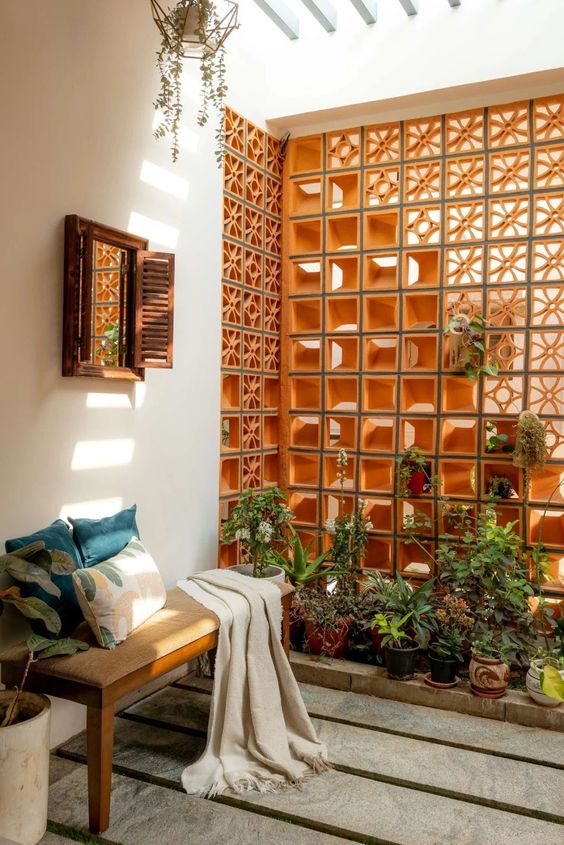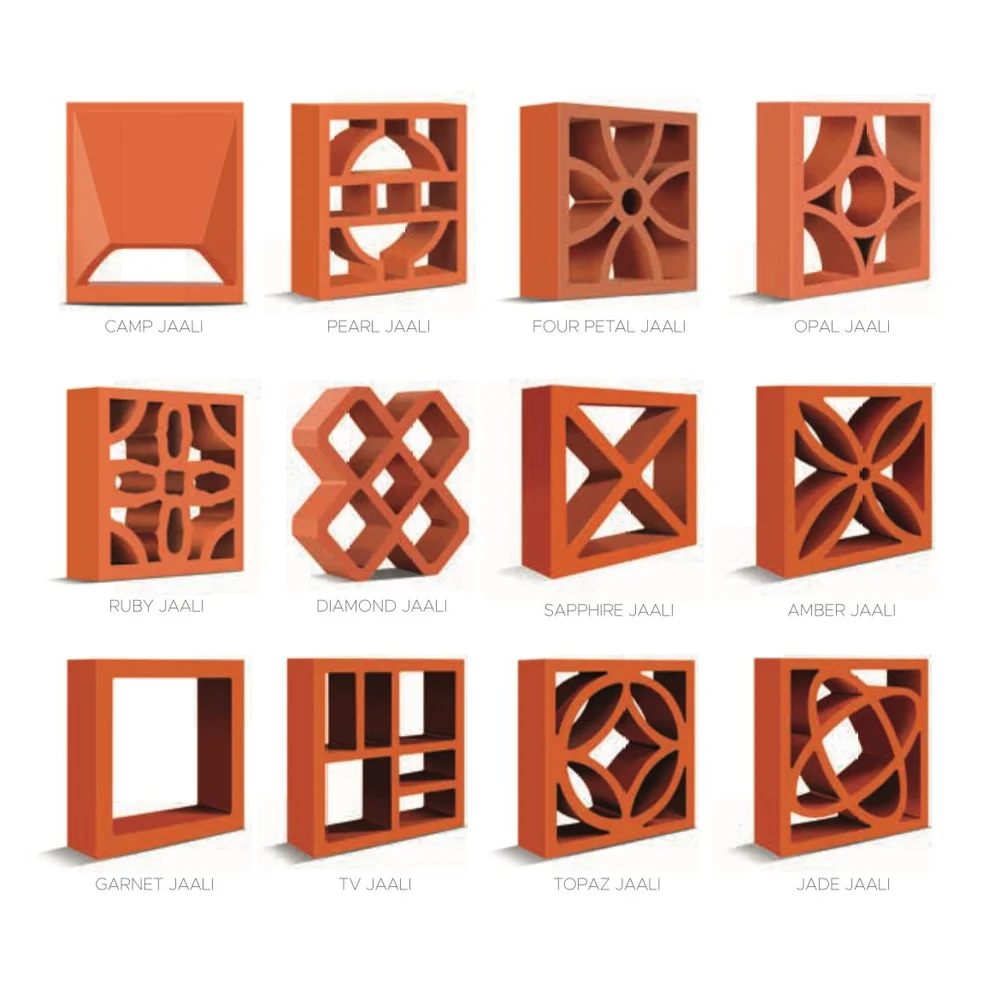In modern architecture, terracotta jali has made a resurgence as both a functional and aesthetic element, blending traditional craftsmanship with contemporary design principles. Its ability to offer natural ventilation, filtered light, and privacy while also adding cultural and artistic value makes it an appealing choice for architects today. The following sections explore its modern applications, sustainability benefits, and design flexibility.
Facade Design and Cladding
One of the most prominent uses of terracotta jali in modern buildings is in façades. Architects incorporate terracotta screens to create striking, textured exteriors that offer a blend of tradition and modernity. The jali façades add a layer of dynamic visual interest, as the intricate patterns play with light and shadow throughout the day.
This approach is often seen in both residential and commercial projects where the jali becomes a key architectural feature. For example, many high-rise buildings in hot climates use terracotta jalis as external cladding to shade the interiors while also maintaining a connection to local cultural heritage. In this way, the jali serves as both an artistic and functional component of the building’s design.
Interior Partitions and Screens
Within interiors, terracotta jalis are used as partitions or decorative screens to create semi-private spaces while maintaining a sense of openness. These perforated screens are ideal for dividing areas without blocking light or obstructing airflow, making them popular in modern open-plan designs. Jalis can be used in offices, restaurants, or even residential homes, where they allow for flexible space management.

Terracotta jalis add a tactile, warm element to interiors, contrasting with more modern materials like glass and steel. The natural clay material provides a connection to nature, offering a sense of warmth and comfort.
Sustainable Architecture
In a world where sustainability is a growing concern, terracotta jali is prized for its eco-friendly attributes. Terracotta is a natural, non-toxic material that is readily available in many parts of the world, and its production has a relatively low environmental impact compared to more industrial materials.
One of the main sustainable benefits of terracotta jali is its contribution to passive cooling. In hot climates, the perforated screens allow air to flow through the building, reducing the need for air conditioning. The jali diffuses sunlight, minimizing heat gain and preventing interiors from overheating. This reduces energy consumption, making the building more efficient and environmentally responsible.
The breathability of terracotta also helps regulate humidity levels inside the building, contributing to a more comfortable living or working environment without the need for artificial climate control systems. This makes terracotta jali a popular choice in green building design, where architects aim to reduce the carbon footprint of their projects.
Customization and Design Flexibility
Modern manufacturing techniques allow for greater customization of terracotta jali designs. While traditional jalis were often handcrafted, today’s designs can be produced with advanced techniques like 3D modeling and CNC cutting, enabling precise and intricate patterns that suit contemporary tastes.

Architects and designers can create custom jali patterns to fit the unique needs of a project, whether they want to evoke traditional motifs or design something entirely new. The flexibility in design allows for creative experimentation with both form and function. Jalis can be adapted to various architectural styles, from minimalistic to ornate, depending on the desired aesthetic.
Standard Size and Price of Terracotta Jali
| Standard Size | Rs/Piece |
|---|---|
| 8x8x2.5 Inches | 110/ Piece |
Packing Availability
| SIZE | MATERIAL | PACKING PER BOX | WEIGHT / Pcs |
|---|---|---|---|
| 8x8x2.5 Inches | Red Clay | 4 Pcs | 2.6 kg (Approx) |
